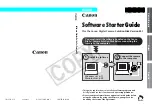
139
Copyright © Acronis, Inc., 2000-2010
by different components of other versions of the product by means of Acronis Backup & Recovery 10,
see the Tape compatibility table (p. 49) section.
Acronis Backup & Recovery 10 enables you to set up distribution of backups by media. For example, a
separate tape set can be used to back up some specific data, and the backups of all other data will be
written onto any currently mounted tape, which does not belong to the tape set. See the Tape
support (p. 118) section for more information.
The backup schemes (Grandfather-Father-Son (p. 35), Tower of Hanoi (p. 38)) considerably assist you
with creating effective schedule and retention rules for backups on a tape library. In combination
with the tape options, the backup schemes enable you to reuse, in automatic mode, the tapes that
are considered as free after backup deletion. See the Tape rotation (p. 146) section for more
information.
4.1.3.2
Hardware
A tape library (robotic library) is a high-capacity storage device that contains the following:
one or more tape drives
multiple (up to several thousand) slots to hold tape cartridges
one or more loaders (robotic mechanisms) intended for relocating the tape cartridges between
the slots and the tape drives
barcode readers (optional).
Each tape may have a special label attached to the side of a cartridge and comprise of:
a barcode to scan by a special reader that is usually mounted on a loader
a readable barcode digital value.
Such labels are used for tape identification in a tape library or especially in off-site storage.
If all cartridges in a tape library have barcodes, the library is ready to be automatically managed by
software.
Tape libraries are a cost-effective solution for data storages with huge capacity. Moreover, tape is
perfect for archiving because cartridges can be stored off-site for enhanced data security. However
reading even a small amount of data from a tape library takes much more time (from several seconds
to several minutes) than from other types of data storages. The best practice of tape usage is "LESS
requests to write/read LARGER amount of data". So systematic access to very large quantities of data
is more suitable for a tape library than random access to small portions of data.
4.1.3.3
Limitations
Limitations of tape library usage are the following:
1.
The consolidation (p. 402) operation is not possible for archives located on tapes. Deletion of a
single separate backup is impossible from a tape. It is possible to delete all the backups stored on
a tape. However, after this operation all the incremental and differential backups, stored on
other tapes and based on the deleted backups, cannot be used for data recovery. In a
Custom
backup plan's retention rules the
If deletion of a backup affects other backups > Consolidate the
backup
option is disabled. Only the
Postpone the deletion
option is available.
2.
Deduplication (p. 402) is not available for archives located on tape storage devices.
3.
File recovery from a disk backup stored on tape is possible, but can take a very long time.
















































